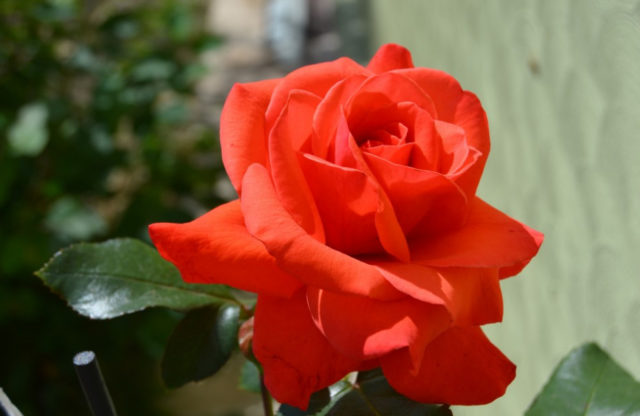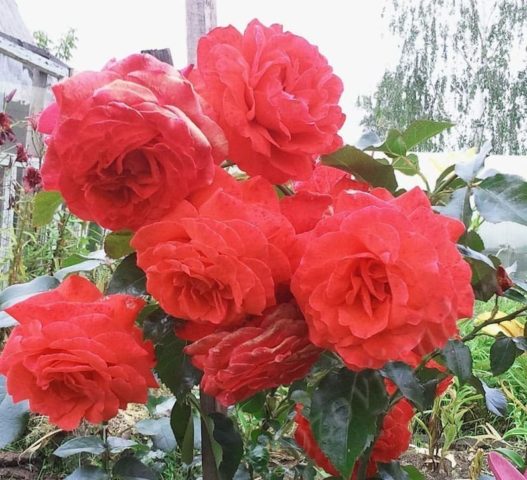Content
Climbing rose Salita (Rose Salita) is a variety that attracts attention with its bright scarlet shade and lush inflorescences. Thanks to its spectacular appearance, this variety has become one of the most sought-after "tools" among landscape designers.
Breeding history
Climbing roses of the "Salita" variety belong to the group of climbers. This is a special variety, the progenitors of which are tea roses, climbing roses, and also representatives of the floribunda. The authors of the Salita variety are a German breeder. This climbing rose was bred in 1987 at the Wilhelm Cordes gardening nursery.
In official sources, the rose "Salita" is called Rose Salita. However, among botanists, this species is better known as the KORmorlet.
Description and characteristics of the climbing rose variety Salita
"Salita" - these are spreading climbing roses, reaching a height of 2.5-3 m. The bush grows about 1.2-1.5 m wide. This variety is distinguished by powerful shoots and dark green matte leaves of large size.
The growth rate is influenced by climatic conditions. The colder the climate, the slower the growth of the bush. This property can be conditionally called a disadvantage, which are extremely few in the climbing rose variety.
In the first year of life, the buds are removed from the culture, thus postponing its flowering. This allows the plant to gain strength and grow.
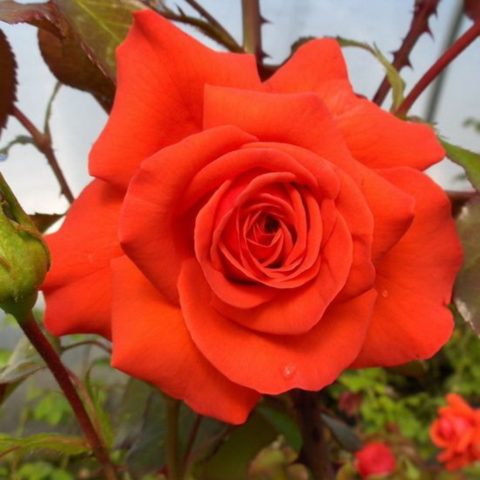
The climbing rose "Salita" has a low rate of development of shoots, this is especially noticeable in regions with a cool climate
Flowers are large double buds, reaching a diameter of 9-10 cm. They are collected in spectacular inflorescences of 5 pieces. The shade of Salita roses varies from orange-coral to bright scarlet.
This species has the characteristics of both tea and hybrid tea varieties. The aroma of roses is light, delicate, with subtle fruity notes. A distinctive feature is the continuous flowering of the bush. The buds bloom alternately at all levels of the climbing rose. Thus, the culture does not lose its attractiveness during the entire spring-summer season.
Winter-hardy varieties are the specialization of Wilhelm Kordes & Sons, therefore, the climbing rose "Salita" is characterized by high frost resistance. With proper care and organized shelter in time, it is able to withstand temperatures as low as -26 ° C. In addition, the climbing culture has an average immunity to diseases and pests, is unpretentious in terms of care and can withstand a long period of precipitation.
Variety "Salita" prefers well-lit areas and does not like drafts, as well as stagnant water. Therefore, when planting, it is necessary to take into account the depth of the groundwater. In this case, it is necessary to water the rose from 1 to 3 times a week.
The climbing rose "Salita" is used in the vertical type of landscaping. She decorates walls, decorates various structures (arches, gazebos, terraces). In some cases, they are used in a single landing. For example, they are planted in the center of the lawn or set off with ground cover crops. A spectacular look can be achieved by planting the Salita rose together with verbena, alissum or phlox. Climbing shoots with bright scarlet flowers next to rich green conifers look organic.
You can get acquainted with the external data of the variety in the video about the blooming of the Salita rose:
Advantages and disadvantages of the variety
The demand for the variety among gardeners can be explained by the following advantages:
- external attractiveness, characterized by rich color, brightness of shades and terry inflorescences;
- the possibility of using roses in landscape design;
- decorativeness in the cut;
- simple agricultural technology;
- high frost resistance (when organizing a shelter);
- abundant, continuous, multi-level flowering throughout the summer season;
- resistance to the invasion of pests and parasites;
- resistance to precipitation.
The disadvantages include a slowdown in development in cold climates and an average immunity to some diseases.
Reproduction methods
Like most varieties of climbing roses, "Salita" is propagated by layering, seed method, grafting and grafting. The use of cuttings and cuttings is the simplest and most affordable method of propagation, which is most often used by gardeners.
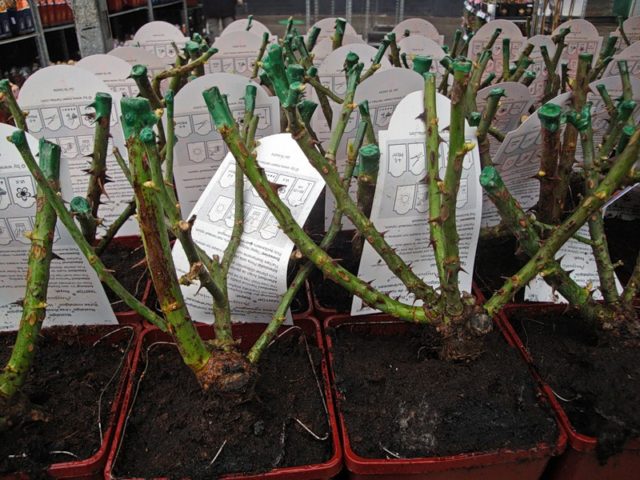
Rose "Salita" loves fertile and breathable soil with a slightly acidic reaction
Seeds must be germinated before planting.
For this you need:
- Stratification is carried out. The seeds are soaked in hydrogen peroxide.
- The processed material is transferred into a bag, then into a container, after which everything is put into the refrigerator for 1.5-2 months.
- During this time, the seeds are checked regularly.
- After a lapse of time, the material is transplanted into peat glasses, mulching with perlite (protection against black leg disease).
- Seedlings are placed in a place with the longest daylight hours (from 10 hours) and watered regularly.
In spring, climbing rose seedlings are fed with complex fertilizers and transplanted into open, well-heated soil.
Growing and care
The optimal landing period is the last decade of September or the first days of November. A climbing rose is planted in a well-lit place, in warm soil. The soil is pre-fertilized with peat and compost, and the bottom of the hole is drained. The distance between seedlings should not be less than 50 cm.If abundant growth of climbing varieties is planned, then the distance can be increased to 2 m.
Care includes watering, fertilizing, mulching, loosening and pruning. But since "Salita" is a climbing rose, it will require an additional garter.
Water the crop 1 to 3 times a week, depending on climatic conditions. In the first year, water for roses is bred with bird droppings (1 in 20), with cow dung (1 in 10) or wood ash.
We must not forget about such a procedure as loosening. The soil is saturated with oxygen immediately after irrigation. Together with loosening, weeding is often carried out.
As a top dressing for the "Salita" variety, use:
- in spring - a solution of urea and ammonium nitrate (20 g per 10-12 liters);
- during the formation of buds - complex fertilizers;
- at the beginning of flowering - a solution of cow dung;
- at the end of summer - superphosphate and potassium salt.
The lush bloom of a climbing rose is directly related to its pruning. In spring and autumn, dried and diseased shoots, lashes older than 4 years, faded buds are removed. All rose stems are cut to 5-6 buds. This is quite enough for the abundant and bright flowering of "Salita".
Climbing roses are mulched with straw, peat or sawdust. As a shelter for the winter, gardeners most often use agrofibre and spruce branches.
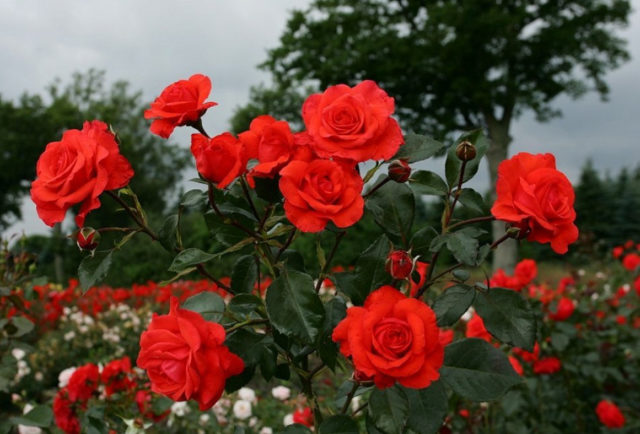
Climbing rose flowers can fade in too bright sun.
The shoots are tied vertically with twine, tape or plastic clips to a support in the form of an arch or a pillar. The optimal time for a garter is kidney swelling.
Pests and diseases
Climbing rose "Salita" has good immunity, but at the same time shows a weakness to fungal infections.The spread of the disease can be avoided by observing agricultural techniques, avoiding stagnant water, and providing the plant with sufficient lighting intensity.
The preparations "Fitosporin-M" and "Baylon" demonstrate good efficiency in the disease with powdery mildew or black spot.
As protection against insect pests, gardeners use ivy broth or garlic soap solution. They are sprayed on the bush, trying not to get on the buds and inflorescences. Pollination with tobacco dust is also popular among folk remedies.
Application in landscape design
The bright scarlet climbing rose "Salita" is a favorite decoration tool of landscape designers. With this culture, you can easily hide unsightly surfaces of walls and fences, decorate gazebos, decorate terraces or the main entrance to a house.
Salita also looks spectacular on wrought-iron fences, lanterns and elements of garden furniture. The best companions for a climbing rose are solid annuals that serve as a backdrop for vibrant coral scarlet flowers.
Conclusion
Climbing rose Salita is one of the most unpretentious and frost-resistant climbers. It is suitable for breeding even in the northern regions of Russia. Observing the basics of agricultural technology and not forgetting about timely pruning, even an inexperienced gardener can cultivate it on the site.
